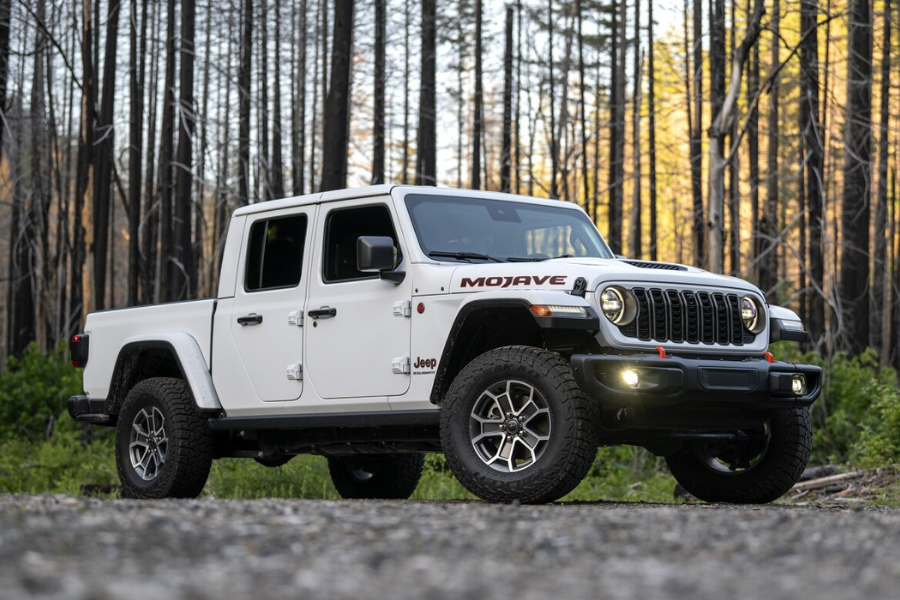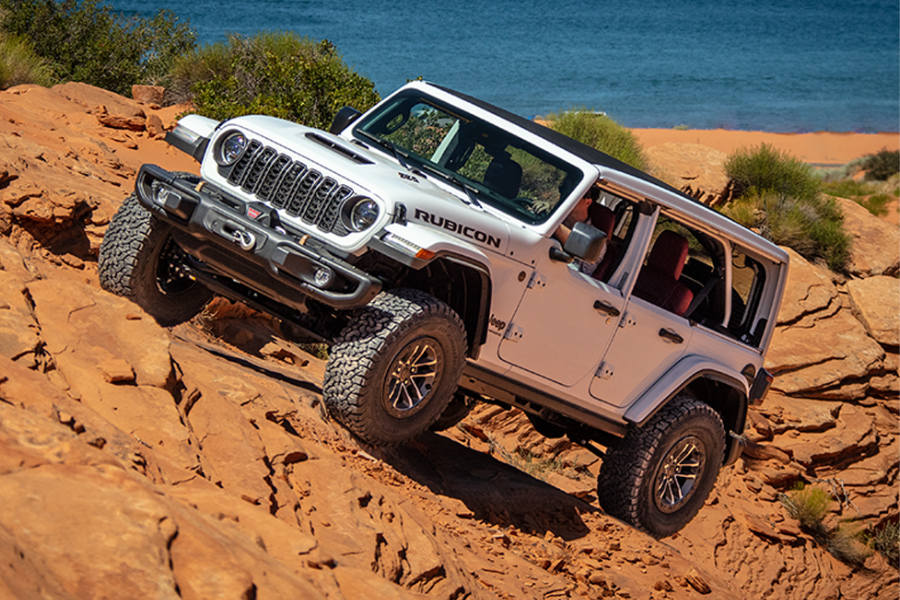Jeep JL OP Rivets: Maximizing Off-Road Performance Through Precision Fastening
The Jeep Wrangler JL is widely celebrated among off-road enthusiasts for its ruggedness, versatility, and ability to handle some of the toughest terrains. But to ensure optimal performance during these off-road adventures, the vehicle must be modified in ways that enhance both its durability and structure. One often overlooked but highly crucial component in these modifications is the Jeep JL OP rivet.
In this article, we’ll delve into the importance of Jeep JL OP rivets, their function in the vehicle’s structure, and how they can significantly impact the safety and performance of your off-roading experiences. Whether you’re a seasoned off-roader or new to the scene, understanding these rivets will empower you to make smarter choices when upgrading or maintaining your Jeep Wrangler JL.
What Are Jeep JL OP Rivets?
At their core, Jeep JL OP rivets are a type of fastener used specifically in the Jeep Wrangler JL for secure and permanent installations. Unlike screws or bolts, which can loosen over time, these rivets are designed to create a long-lasting bond between components, providing superior strength and resistance to the intense conditions that off-road vehicles face.
Jeep JL OP rivets are used across the vehicle in various areas, including the exterior panels, fender flares, bumpers, and interior components. Their main function is to secure critical parts, especially in regions subject to a lot of movement or impact during off-road excursions. With their vibration-resistant design, these rivets help ensure that your vehicle remains intact, no matter how tough the terrain gets.
Why Are Jeep JL OP Rivets Essential for Off-Roaders?
Off-roading exposes vehicles to constant jolts, bumps, and vibrations. Without the right fasteners, essential components of your vehicle could loosen, leading to potential breakdowns or performance issues. Jeep JL OP rivets are specifically designed to prevent such problems by offering unparalleled durability and stability.
1. Superior Strength and Durability
Jeep JL OP rivets stand out due to their exceptional strength. While conventional screws or bolts might weaken or loosen over time from constant vibrations, rivets form a permanent bond that maintains the structural integrity of the Jeep. This ensures that parts like bumpers, fender flares, and protective panels remain securely fastened, no matter how extreme the conditions.
2. Critical for Structural Integrity
Off-roading requires that every element of your Jeep Wrangler JL works together to ensure the vehicle remains stable and safe. Jeep JL OP rivets help maintain the vehicle’s structural integrity by keeping key components tightly attached. This reduces the chances of parts detaching mid-ride, offering peace of mind during rough journeys.
3. Vibration and Shock Resistance
The vibrations that occur while off-roading can cause traditional fasteners to loosen over time. However, Jeep JL OP rivets are designed to withstand constant movement and shock, providing a stable hold for critical parts. This makes them indispensable for securing components such as skid plates and bumpers, which are subjected to intense forces during off-road drives.
4. Perfect for Customization
For those who enjoy customizing their Jeep Wrangler JL with aftermarket accessories like roof racks, winches, or even fender modifications, Jeep JL OP rivets offer the ideal solution. Their strength ensures that these accessories remain securely in place, even during the most grueling off-road adventures.
Common Applications of Jeep JL OP Rivets
Knowing where and how Jeep JL OP rivets are used on your vehicle can help you make better choices when modifying or upgrading your Jeep. Below are a few key areas where these rivets play an important role in off-road performance.
1. Securing Fender Flares
Fender flares are a popular addition to Jeeps, especially for those who want to install larger tires. They help protect the vehicle’s body from debris and mud kicked up by the tires, making them an essential component for off-roading. Jeep JL OP rivets are often used to fasten fender flares, ensuring that they remain securely in place during high-speed or bumpy rides.
2. Attaching Door Panels
When reattaching door panels—whether you’ve removed them for a full-door or half-door experience or replaced them with aftermarket options—Jeep JL OP rivets are commonly used to create a firm connection. This ensures that the doors don’t rattle or come loose while driving on rugged terrain.
3. Installing Bumpers and Skid Plates
Bumpers and skid plates are designed to protect the Jeep’s undercarriage and front/rear end from damage caused by rocks and other obstacles. These components need to be securely attached, and Jeep JL OP rivets are the perfect solution. They ensure that bumpers and skid plates stay in place, providing protection where it’s needed most.
4. Mounting Roof Racks and Overland Gear
For overlanding enthusiasts, roof racks are essential for carrying tents, equipment, and other gear. Installing a roof rack requires reliable fasteners, and Jeep JL OP rivets offer the durability needed to support heavy loads while withstanding the rigors of off-road conditions.
Step-by-Step Guide to Installing Jeep JL OP Rivets

Installing Jeep JL OP rivets might seem like a technical task, but with the right tools and steps, it can be straightforward. Below is a simplified guide to help you install these rivets on your Jeep.
Step 1: Gather the Right Tools
You’ll need a few basic tools to install Jeep JL OP rivets: a rivet gun, a drill (if holes need to be made), and the correct-sized rivets for your project. Make sure to have everything ready before you begin the installation.
Step 2: Drill Holes (If Required)
Depending on where you’re installing the rivets, you might need to drill holes. Ensure the holes are the correct size for the rivet to fit snugly. The hole should be slightly larger than the rivet’s shaft to ensure a secure fit once the rivet is expanded.
Step 3: Insert the Rivet
Place the rivet into the pre-drilled hole. Ensure that the head of the rivet sits flush against the surface for a secure hold.
Step 4: Use the Rivet Gun
Attach the rivet gun to the stem of the rivet, then squeeze the handles. This will pull the stem through the rivet body, causing the tail to expand and lock the rivet in place.
Step 5: Inspect the Fit
After the rivet is secured, check that the attached part is firm and doesn’t move. The rivet should be flush with the surface, and there should be no gaps between the connected components.
Choosing the Right Jeep JL OP Rivets
Selecting the right rivet for your Jeep is just as important as the installation. Rivets come in various sizes, materials, and strengths, and choosing the correct one ensures optimal performance. For off-road applications, steel or aluminum rivets are generally recommended due to their strength and resistance to rust or corrosion.
Consider the material of the part you’re attaching, as well as the stress it will be exposed to. If you’re securing a heavy-duty component like a bumper, using a steel rivet is essential for ensuring it stays firmly attached.
Conclusion: Jeep JL OP Rivets as a Vital Part of Your Off-Road Modifications
Though often underestimated, Jeep JL OP rivets play a critical role in maintaining the performance and durability of your vehicle during off-road adventures. These small but mighty fasteners are designed to withstand the constant vibrations, shocks, and harsh conditions that come with off-roading.
From securing fender flares to attaching roof racks, understanding and utilizing Jeep JL OP rivets can make all the difference in ensuring that your modifications are both reliable and long-lasting. Whether you’re adding custom accessories or reinforcing your vehicle’s existing components, investing in high-quality rivets will provide the peace of mind you need to tackle even the most challenging trails with confidence.
Keep an eye for more news & updates on Your Buzz!






